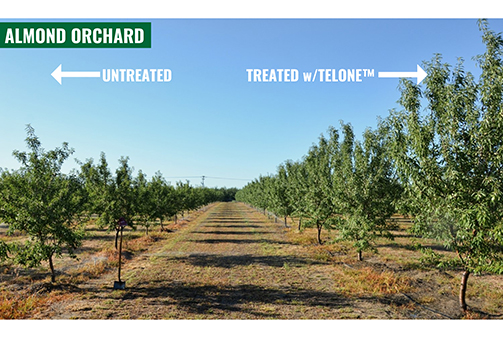New Pea Variety Offers Disease Resistance

Hampton is a new edible dry pea variety that resists some of the legume crop’s most costly scourges, including pea enation mosaic virus and bean leaf roll virus. Photo by Rebecca Mcgee.
USDA scientists in Pullman, WA, developed Hampton, a new edible dry pea variety that resists multiple pathogens of this legume crop. Two pathogens of particular concern are the pea enation mosaic virus (PEMV) and bean leaf roll virus (BLRV). In severe cases, both of these aphid-borne pathogens can inflict crop losses of 80% to 90%, according to Rebecca McGee, a plant geneticist with USDA’s Agricultural Research Service (ARS).
Besides seed-yield losses, outbreaks of PEMV and BLRV also deprive growers of an important grain-rotation crop that can cut down on synthetic fertilizer use — the result of the legume’s symbiotic relationship with nitrogen-fixing root bacteria, adds McGee, at the ARS’s Grain Legume Genetics and Physiology Research Unit in Pullman.
Fortunately, Hampton resists both of these viral threats as well as a variety of fungal pathogens that cause Fusarium wilt and powdery mildew. Hampton owes its broad disease resistance, high yield and other valued agronomic traits to a top-performing population of sixth-generation offspring plants derived from crossing two ARS pea breeding lines, PS810090 and PS510718.
McGee developed, evaluated and released Hampton as part of a pea, lentil, and chickpea germplasm-improvement program at Pullman together with collaborators from North Dakota State University, Washington State University, Montana State University and the University of Idaho.
During yield trials from 2008-2013 at 40 sites in Washington State, North Dakota, Idaho, and Montana, Hampton produced seed yields that exceeded those of the commercial cultivars Aragorn, Ariel, and Banner by 12%, 13% and 5%, respectively. Hampton is intended for production in the Pacific Northwest and Northern Plains, but is particularly suited to the Palouse, a hilly, fertile region encompassing parts of southeastern Washington State, northeast Oregon and northwest Idaho.
The Washington State Crop Improvement Association is handling inquiries for certified seed of Hampton, which should be available to growers in spring 2016.
Learn more about Hampton in the September issue of AgResearch.










